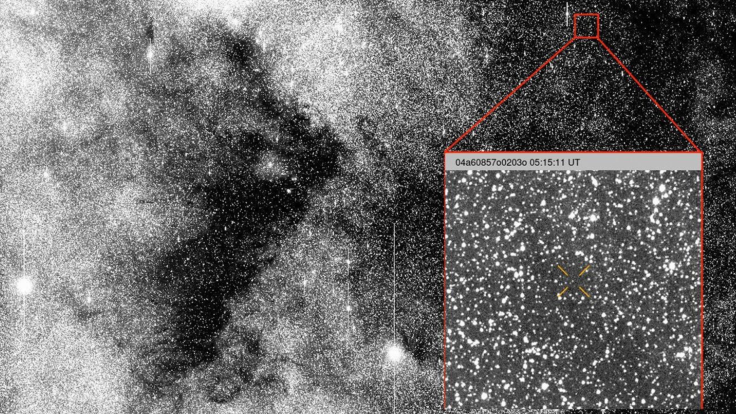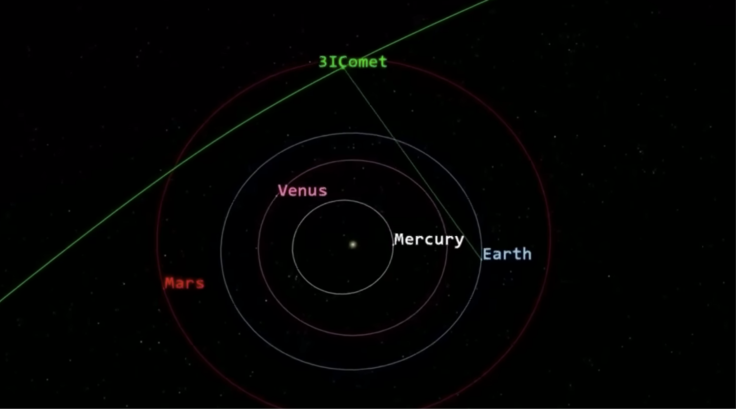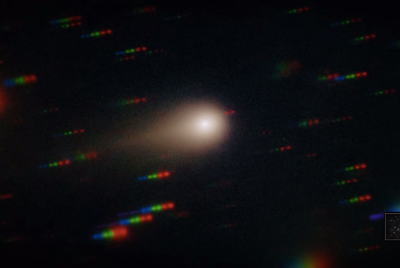3I/ATLAS Stuns Scientists: Vanished Interstellar Tail Roars Back to Life
Interstellar comet 3I/ATLAS stuns scientists as its once-vanished ion tail roars back to life, captured in dramatic new images.

Just when astronomers thought they were getting a handle on 3I/ATLAS, the enigmatic interstellar visitor has stunned scientists once again. After baffling researchers by appearing to lose its tail entirely after its pass near the Sun, the comet is putting on a new, dramatic display.
A stunning new image has revealed its once-vanished interstellar tail has not just reappeared; it has roared back to life, now longer, brighter, and more structured than ever before. This latest twist in the story of our rare interstellar traveller comes from new observations captured by the Virtual Telescope Project.

Capturing the New Tail of 3I/ATLAS Under Difficult Skies
The spectacular new image was taken at 11:31 p.m. EDT on November 10 (04:31 GMT on November 11). It is a composite of 18 long-exposure frames gathered by robotic telescopes in Manciano, Italy. Capturing this shot was no easy feat. The comet was hovering at a very low position, only 14 degrees above the horizon.
To make matters more challenging, a 61 per cent illuminated Moon was also interfering. Despite these difficult conditions, the resulting photograph is remarkable, showing a sharply defined and luminous ion tail stretching impressively across the sky.

The Puzzling Disappearance of the 3I/ATLAS Tail
This new development is so striking because of what happened earlier in the comet's journey. Astronomers were baffled when 3I/ATLAS appeared to lose its tail entirely after passing near the Sun. The disappearance, or vanishing, of this interstellar tail—a typically predictable feature of comets heated by solar radiation—stunned researchers.
Harvard astrophysicist Avi Loeb noted at the time that about 13 per cent of the comet's mass 'should appear as a tail, but no such tail is visible'. This lack of activity was a deep puzzle, but now, only weeks later, the comet's activity has dramatically surged.

The 'Better and Better' Resurgence of 3I/ATLAS
Gianluca Masi, founder of the Virtual Telescope Project, explained the successful observation: 'Exploiting the unusual good weather of this season, we imaged the interstellar comet again, recording a much more developed ion tail'.
This powerful resurgence is the 'roar back to life' that has captured scientific attention. 'Looking at the picture, we see how the ion tail of 3I/ATLAS is clearly showing better and better'.
An ion tail, like the one now clearly visible, forms through a specific process. The Sun's powerful ultraviolet radiation strips electrons from gases (like carbon dioxide) that are sublimating, or venting, from the comet's nucleus.
These newly charged particles, or ions, are then caught and swept directly away from the Sun by the solar wind. This creates the long, straight, and often bluish tail that is distinct from a comet's more curved, yellowish dust tail.
The new image provides a wealth of detail, showing:
- A bright core and a compact coma (the fuzzy atmosphere around the nucleus).
- A sharply defined ion tail stretching roughly 0.7 degrees.
- A faint anti-tail, which appears to point towards the Sun (a feature often caused by perspective, where we see larger dust particles left in the comet's orbit).
This renewed and vigorous activity suggests an increase in the sublimation of ices and dust from the comet, hinting at the unique and complex composition of this interstellar visitor.
Why 3I/ATLAS Is a Crucial Interstellar Messenger
The intense scientific interest in 3I/ATLAS is because it is only the third confirmed interstellar object (ISO) ever detected visiting our solar system, following 1I/'Oumuamua in 2017 and 2I/Borisov in 2019. Each visitor provides a rare, direct sample of material from another star system.
'If confirmed, it will be the third known interstellar object... providing more evidence that such interstellar wanderers are relatively common in our galaxy', said Mark Norris, Senior Lecturer in Astronomy at the University of Central Lancashire.
The journey of 3I/ATLAS is far from over. Both NASA and the European Space Agency (ESA) will continue to track the object as it heads towards an encounter with Jupiter in March 2026. This extended observation window offers astronomers an unprecedented opportunity to study how interstellar comets form, evolve, and behave as they journey through our solar system.
The stunning resurgence of 3I/ATLAS's ion tail, after it completely vanished, serves as a powerful reminder that these interstellar messengers are full of surprises. This visitor is not a static rock but a dynamic, active body from another star system, offering unprecedented insights with every new observation.
Just as scientists were baffled by its disappearance, they are now stunned by its dramatic return. As 3I/ATLAS continues its long journey toward Jupiter for its 2026 encounter, the scientific community must keep watch. This is a rare, fleeting opportunity to study a messenger from another star, and we must not look away.
© Copyright IBTimes 2025. All rights reserved.




















